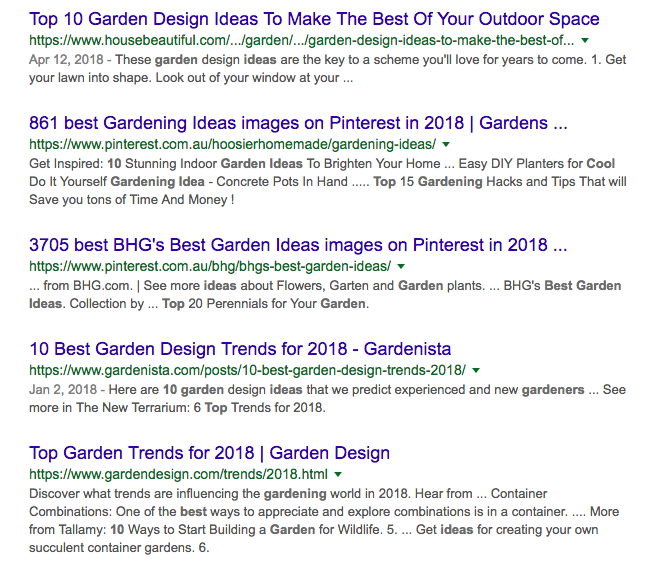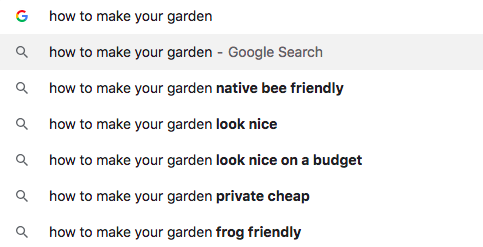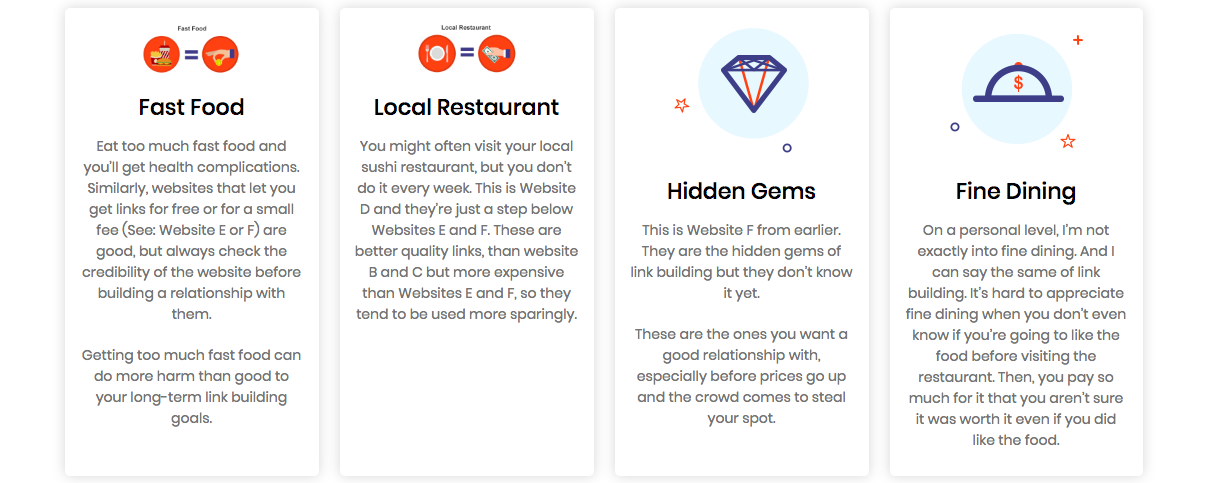How To Engage An Audience
-
Aaron Gray
- Blogs
-
August 01 , 2018
-
9 min read
Content for the simple sake of content… just doesn’t work on the Internet anymore. Adding a few keywords to ultra-boring SEO writing is not the solution.
Let’s face it! You wouldn’t read anything that has no value and is uninteresting…and neither will your customers and readers.
Your copy needs to effortlessly engage the interest of your readers, and as a consequence this will naturally build authority.
So What Do You Need To Do Engage An Audience?
You need to develop your writing skills, and that comes with practice. But there’s something even more important than your writing muscles that you need to use to write engaging content – and that’s your imagination.
It’s easy to get stuck in a rut, doing what we always do, thinking like we always do, and producing what everyone else produces. But to engage with customers you need to break out of the norm, expand your repertoire and think differently. To get you off on the right foot take a look at these 5 tips that can get your imagination and your writing skills whirring.
- Make Your Headlines Irresistible – A headline needs to draw a reader’s attention; it needs to be compelling and coax your audience into reading your content. Still don’t know where to start? Well, maybe these tips will help.
- Use Power Words – Headlines with power words have a higher chance of gaining your readers attention than those that don’t. Power words are words that entice excitement or urgency. For example; ‘Hidden Secrets To Google First Page Success’ sounds more enticing than ‘Tips On Getting On Google’s First Page’.
- Focus On The Who not Why – According to Hubspot if you focus your headlines on the who and not the why, you can gain up to 22% higher CTR rate. For example ‘Best Ways Brands Are Making A Profit On Facebook’ isn’t as catchy as ‘Brand Names Who Are Making An Impact On Facebook’
- Keep Headlines Short – Headlines should also be short and to the point but have impact. It’s a good idea to keep your headlines around 70 characters or less to help avoid Google from cutting it off in their search results.
- Add A Themed Keyword – This is generally done in themed link building and it can help Google to push you up in search engines a lot easier. What you do is work out a keyword that you’d like to rank for. For example: you may want to rank for outbound marketing. What you’d do is work on a catchy title which features these keywords such as ‘Outbound Marketing Essentials For The Newbie’. While this will also get your audience’s attention, it’ll also get the attention of Google as well. You also need to have your keywords in the title of the article as well as the URL to make it most efficient.
- Create Lists – For some reason, the human brain is irresistibly drawn to lists, so create a list type of title. Lists make a promise to help a reader in a simple way. Try incorporating a number in the title. Something like; 5 ways to…., 10 Irresistible…., 3 Terrific….. Studies demonstrate that these types of titles do well at attracting attention.
These are just some great examples of how to write catchy headlines that can grab your reader’s attention as well as Google’s attention.
2) Tell a Story
Your title needs to condense your story in a quick sentence, but your content needs to elaborate on that story, draw your reader to you, just as if you were down at the local pub telling a story. Some people argue that your content needs to be long, and that this will help your content perform better in search engines. However, length simply for length’s sake doesn’t work. Google doesn’t like overly wordy pieces with little to no real value. So instead, you should place emphasis on circulating content by offering:
- Relevant Content – Content needs to be relevant to your audience to make people want to read it. There’s no point writing about how to buy the best fishing reel if your target audience are those who enjoy raising fish in a fish tank. Content relevancy is important to not only interest your audience but also to help Google see that you’re a leader in your industry.
- Easy To Read Content – Your content should also be easy to read. It should use styling features such as subheadings, bullet points, and paragraphing to help break up large blocks of text. Without proper styling to break up the text you run the risk of losing interest from your readers and causing them eye fatigue.
- Enjoyable and Relatable Content – The content that you create should be enjoyable and relatable for your readers. Depending on the subject matter you’re writing about, it should offer lots of information that can help a reader. It should be relatable to their situation. For example if you’re targeting small business owners, your content needs to be directed at small business owners instead of business owners in general.
- Content That Solves A Problem – Your audience will have a problem they want help solving. In order for you to really gain their attention, you need to focus on content that helps to solve their problems. But how to do find out what their problem is? You can generally find this out by using Google search generator. Typing in some keywords about a subject in your industry will give you automated search results that people are looking for. You can use these as inspiration for your content.
Focus on giving information that is rich in context. Offer your expertise and write content that makes you into an authoritative source.
3) Use Keywords Sparingly
Yes, we admit using keywords in content takes a bit of a knack. You have to work at placing those marketing keywords strategically on your blog so they’re natural. SEO is a constantly changing world and Google changes the algorithms frequently.
Today, your website’s SEO efforts can easily be penalised, simply from having keyword overuse. Websites that are full of unnaturally placed keywords don’t often see too many benefits nowadays. This is an outdated method of optimization, so you want to make sure your piece isn’t too keyword dense.
Instead as suggested in the headline section of this article you can try the themed link building method when it comes to keywords. This is where you add a keyword in the title and the URL of the article when it’s published. For example:
If your blog title has the keyword ‘Blogger Outreach’ you’d have the title something like:
Blogger Outreach Best Practices
The URL of the live blog would have your keywords in it as well.
As you can see both the title and the URL have the keyword blogger outreach in it. This is a great way to maximize your SEO efforts without going overboard with inner content keywords.
4) Make Your Point Quickly
Yes, I know. In school they taught us to elaborate – and you should, just keep your sentences and paragraphs short. Remember, the web reader scans a document. Screens can be hard on the eyes so make it easy for your readers to see your point quickly – they just may not have enough time to read completely through your piece. Some ways to help make this happen is to:
- Use subheadings that state what each section will be about.
- Add bullet points to help get your key points across to your readers.
- Use paragraphs that are around 4-5 sentences long to help break up blocks of text.
- Use images such as screenshots to help get your point across easier.
Making your point quickly and efficiently while also making it easy for your audience to read is essential.
5) Make It Fresh
Stay on top of your content. Search engines prefer material that is new, relevant and interesting. So create a blog as this can help you manage your content and keep it fresh. Effective content needs to be creative, new and unique. Here’s some tips to help keep your blog or content fresh:
- Make It Evergreen – Evergreen content is content that no matter when it’s read across the years after it’s created it can still be used again and again to help future readers. Evergreen content doesn’t have a date or year attached – (Best Tips On Building Links In 2018) – this title for example isn’t evergreen content as it narrows the topic down to 2018 and when read in 2020 it won’t be relevant any more. Instead stick to content that doesn’t have a date, year, month attached.
- Create Duplicate Free Content – Any content you make needs to be unique and fresh. It shouldn’t be copied word by word from another website. This can hurt your website rankings. Instead it’s important that when creating content off other blog ideas you write it in your own words and use different sources for information. To check if there’s plagiarism with your content you can use tools such as Copyscape.com.
6) Connect the Dots
Find those connections between seemingly unrelated items and then relate them. You can for example, relate that interesting person you saw on the train this morning to your story. Think; What does that bike ride have to do with your business goals, or that cooking class with your new product. Tie it all together to bring about the content that people will want to read.
7) Change the Perspective
Last but not least, put yourself in the reader’s shoes. Think about what might be interesting to them. Change your perspective. Think how a child might see the situation or even an object like a paper clip or a table. Write from that point of view.
When you challenge yourself to see a solution from a different perspective you make your web content more interesting. Your creative juices start flowing and you find insight that really interest people in what you have to say.
Still have problems? Ask one of our content experts here at No BS to help with your content needs. We can create interesting content from even the most mundane topics.
Subscribe to Our Blog
Stay up to date with the latest marketing, sales, service tips and news.









